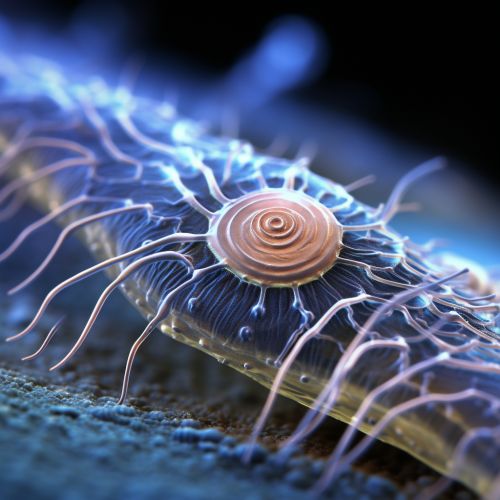Dinoflagellates
Introduction
Dinoflagellates are a large group of flagellate eukaryotic organisms that constitute the phylum Dinoflagellata. They are found in various marine and freshwater environments, where they play a critical role in the ecological functioning of these ecosystems. Dinoflagellates are unique in their complex cell covering known as the theca, which is composed of a series of plates that can be intricately ornamented.


Classification and Diversity
Dinoflagellates are classified under the supergroup Alveolates, which also includes other important groups such as ciliates and apicomplexans. They are further divided into two main classes: Dinophyceae (the dinoflagellates proper) and Syndiniophyceae. The former is characterized by the presence of a transverse and a longitudinal flagellum, while the latter lacks the transverse flagellum and is often parasitic.
Morphology
Dinoflagellates exhibit a wide range of morphological diversity. The most distinctive feature of dinoflagellates is their unique cell covering, the theca, which is composed of cellulose plates. The arrangement and ornamentation of these plates can be used to identify different species. The cell is typically biflagellate, with one flagellum encircling the cell in a transverse groove (cingulum) and the other extending longitudinally from a longitudinal groove (sulcus).
Life Cycle and Reproduction
Dinoflagellates have complex life cycles that can include both sexual and asexual reproduction. The asexual cycle involves binary fission, where the parent cell divides into two daughter cells. Sexual reproduction in dinoflagellates involves the fusion of two compatible gametes to form a zygote, which then undergoes meiosis to produce new individuals.
Ecological Roles
Dinoflagellates play a crucial role in aquatic ecosystems. They are a major component of the phytoplankton community and contribute significantly to primary production. Some dinoflagellates are also known to form symbiotic relationships with other organisms, such as corals, providing them with nutrients in return for protection and a stable environment.
Bioluminescence
A fascinating aspect of some dinoflagellates is their ability to produce light, a phenomenon known as bioluminescence. This is achieved through a chemical reaction involving a compound called luciferin and an enzyme called luciferase. Bioluminescence in dinoflagellates is thought to be a defense mechanism against predators.
Harmful Algal Blooms
Certain species of dinoflagellates are known to cause harmful algal blooms (HABs), also known as red tides. These events can have devastating effects on marine ecosystems, causing mass mortalities of marine life and posing a significant risk to human health.
